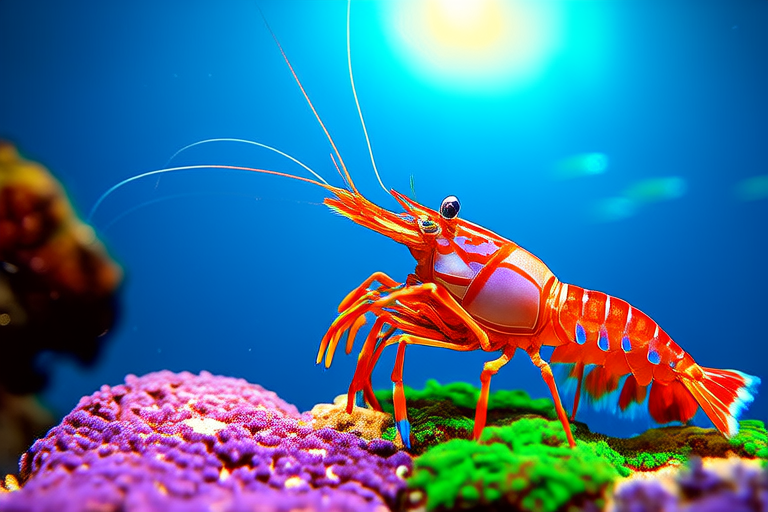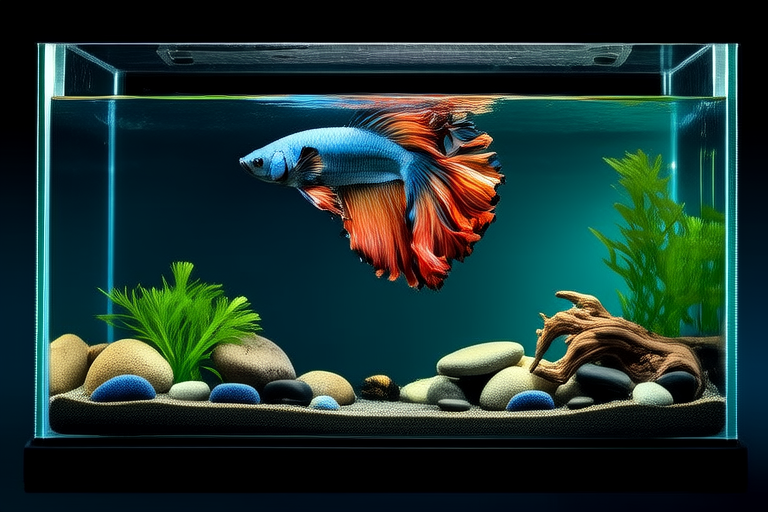
From Ocean to Aquarium: Raising Happy and Healthy Coral Shrimp at Home
Welcome to the fascinating world of coral shrimp! These small, colorful crustaceans are not only visually stunning but also offer a unique opportunity for aquarists to bring a piece of the ocean into their homes. This article will guide you through the process of setting up a suitable aquarium environment, providing essential care instructions, and helping you maintain your coral shrimp’s happiness and health.
The Natural Habitat of Coral Shrimp
Coral shrimp, also known as coral banded shrimp or stenopus hispidus, are native to the Indo-Pacific region, where they thrive in the warm, salty waters of coral reefs. They are typically found in pairs, living in crevices and caves within the reef structure. In their natural habitat, these shrimp play a vital role in keeping the reef ecosystem clean by scavenging on dead organisms and detritus. Their vibrant colors, which can range from bright red to orange, make them a popular choice for marine aquarium enthusiasts.
Setting Up the Perfect Aquarium Environment
To ensure your coral shrimp thrive in your home aquarium, it’s crucial to replicate their natural habitat as closely as possible. Here’s what you need to consider:
Water Parameters
Maintaining the right water conditions is key to the well-being of your coral shrimp. The ideal temperature range for coral shrimp is between 72°F and 82°F (22°C to 28°C). Salinity should be kept at approximately 1.023 to 1.025 specific gravity, which corresponds to a salinity level of around 30 to 34 parts per thousand (ppt). Regular testing and adjustments are necessary to keep these parameters stable.
Tank Size
A minimum tank size of 20 gallons is recommended for a single pair of coral shrimp. However, if you plan to add more shrimp or other marine species, a larger tank is advisable to provide ample space for all inhabitants.
Filtration Systems
An efficient filtration system is essential for maintaining water quality. A combination of mechanical, biological, and chemical filtration methods works best. Mechanical filters help remove large particles, while biological filtration supports the growth of beneficial bacteria that break down harmful waste products. Chemical filtration aids in removing dissolved organic compounds and toxins from the water.
Appropriate Tank Mates
Choosing the right tank mates is important to avoid stress and potential conflicts. Coral shrimp are generally peaceful and can coexist with most non-aggressive fish and invertebrates. However, it’s wise to avoid aggressive or predatory species that may pose a threat to your shrimp. Compatible tank mates include clownfish, damselfish, and certain species of snails and hermit crabs.
Detailed Care Instructions
Understanding the feeding habits and nutritional needs of coral shrimp is fundamental to their care.
Feeding Habits and Diet
In the wild, coral shrimp are opportunistic feeders, consuming various types of food such as algae, plankton, and small invertebrates. In captivity, they can be fed a variety of foods, including frozen brine shrimp, mysis shrimp, and small pieces of meaty seafood like scallops or shrimp. It’s important to provide a balanced diet that includes both protein-rich and plant-based options. Feeding once or twice a day is sufficient, ensuring that any uneaten food is removed promptly to prevent water pollution.
Nutritional Needs
Coral shrimp require a diet rich in vitamins and minerals to maintain optimal health. Incorporating supplements specifically formulated for marine invertebrates can enhance their overall well-being. Additionally, providing a varied diet helps stimulate natural feeding behaviors, contributing to the shrimp’s mental and physical health.
Maintaining Water Quality and Health Monitoring
Regular maintenance of water quality is paramount for the longevity and health of your coral shrimp.
Water Changes
Performing regular water changes is crucial to maintaining clean and healthy water conditions. Aim for a 10-15% water change every two weeks, increasing frequency during periods of higher bioload or when water parameters start to fluctuate. Always use pre-mixed saltwater or properly mixed saltwater to avoid sudden changes in salinity.
Common Health Issues
Despite your best efforts, coral shrimp may occasionally face health challenges. Some common issues include bacterial infections, parasitic infestations, and stress-related illnesses. Early detection and prompt treatment are essential. Symptoms to watch for include lethargy, loss of appetite, discolored or damaged appendages, and unusual behavior. Consult with a veterinarian specializing in aquatic animals for proper diagnosis and treatment.
Observing and Enjoying Your Coral Shrimp
Once your coral shrimp are settled into their new home, take time to observe and appreciate their unique characteristics. These shrimp are known for their bold and curious nature, often exploring their surroundings with great enthusiasm. Watching them interact with their environment and each other can be a rewarding experience for any aquarist.
Additionally, consider enhancing your enjoyment by creating a themed aquarium that reflects the natural beauty of their ocean habitat. Incorporate live rock, corals, and other reef elements to provide hiding spots and enrichment. This not only benefits the shrimp by offering a more stimulating environment but also adds visual appeal to your aquarium.
Conclusion
Raising happy and healthy coral shrimp in your home aquarium requires careful planning and attention to detail. By understanding their natural habitat, setting up an appropriate environment, and providing the necessary care, you can ensure that your coral shrimp thrive in their new home. Enjoy the journey of bringing a piece of the ocean into your living space and the rewarding experience of watching these captivating creatures flourish.




